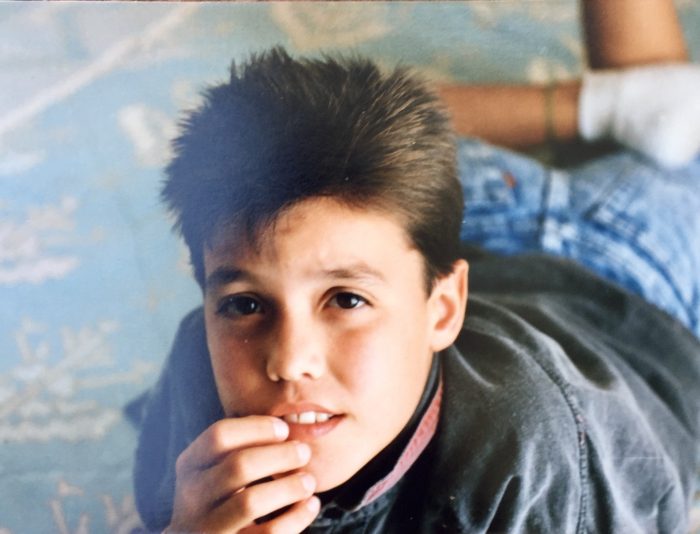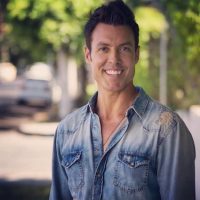Over the years, I’ve seen where stress about body image can lead.
Living and working in West Hollywood, I’ve known far too many young impressionable men who have died by suicide or who have overdosed because of it.
Someone I follow on social media recently shared that her friend had died. The person she was paying tribute to was a young gay man.
She wrote, “The pressure he felt living amongst all those hard bodies in West Hollywood got to him like a poison in his brain—he wanted to be thinner. I wish he’d known he was beautiful. I wish he’d known his worth."
She continued writing about the social pressures imposed on men in the gay community and for women in general.
In an article called, “Body Image Concerns of Gay Men: The Roles of Minority Stress and Conformity to Masculine Norms,” the authors report that gay men tend to have greater body dissatisfaction, body-related distress, eating disorder behavior, and poorer body image than heterosexual men.
The entire study points to the minority stress model, which posits that minority groups are subjected to chronic stress related to overall societal stigmatization.
I’m all too familiar with the body stress imposed on gay men. For 11 years, I worked at a gay bar in West Hollywood—the pressure of having to fit a certain standard was all-consuming sometimes.
I remember when I first started serving. It was on a busy Sunday afternoon, and I was taking over another server’s section. When I walked up to introduce myself to a large group of really attractive and physically fit gay men, they looked me up and down and then one of them yelled, “Oh no, no, bring back the hot server!”
I was mortified. I turned around and walked away like a dog with his tail between his legs. I felt defeated and gave the table to another server.
After working at a gay bar for as long as I did, I heard many similar stories from coworkers. The strain of how to look was exhausting, and so the feeling of inadequacy was pervasive. One of my friends used to tease me for wearing a jacket when I worked. I didn’t wear it because I was cold—I wore it because it protected me from feeling judged.
Recently, I spoke with a faculty member from the LGBT Affirmative Therapy Specialization at the university I’m attending for graduate school. They’ve worked in the department for 15 years, and I asked them after all the years of progress, what is something they’d like to see addressed more openly.
They said, “Body image—especially among gay men.”
I’ve always loved American mythologist, writer, and lecturer, Joseph Campbell’s analogy of The Hero’s Journey in describing our lives. I believe each of us is on a hero’s journey, and part of our journey is discovering who we are, what our soul came here to do, and how to love ourselves.
Joseph Campbell said, “The privilege of a lifetime is being who you are.”
I believe the privilege of a lifetime is being able to love ourselves from the inside out.
Being gay and growing up in a religious household, I didn’t think God was available for me. Whether I called it God, love, universe, divine, or nature, reestablishing a relationship with my version of a “higher power” was one of the best decisions I ever made.
For the past nine years, I’ve been consciously cultivating a spiritual connection of my own understanding. And since beginning Al-Anon (a 12-step program for families and friends of alcoholics), my “higher power” has offered repair to specific themes of my story—one of which is having a desire to feel seen, while at the same time being afraid to show who I am.
Last week, I attended a queer-focused Al-Anon meeting, and someone in the group shared that they just started working the 12 steps on their body. They said they have been in recovery for 30 years, and so they wanted to change up their program a bit. I had never heard of anyone practicing the steps on their body before, but the more I thought about it after the meeting, the more it made complete sense.
Step one of the 12 steps says, “We admitted we were powerless over alcohol—that our lives had become unmanageable.” In Al-Anon, we can replace alcohol with, “people, places, and things.”
As it relates to the body image challenges I faced as a gay man, I completely acknowledge how powerless I felt over my body. In fact, many other gay men have reached out to me over the past few weeks. They shared their own body image struggles and told me how damaging it’s been to their self-esteem.
One of the key findings from the article on body-related stress and gay men says that by understanding the connection between unhealthy body standards and minority stress, we can help empower gay men and prevent body image distress before it continues causing harm.
Another key finding says that education might help reduce negative self-perceptions and attitudes. Basically, the more we can openly talk about body image stress, the more we heal. And the more we hide our pain inside, the more we keep our shame alive.
The benefits of the 12 steps aren’t exclusive to addiction. Applying a 12-step recovery approach can help heal body image concerns for gay men and women alike.
Al-Anon’s promises even say, “If we willingly surrender ourselves to the spiritual discipline of the 12 steps, our lives will be transformed. We will become mature and responsible individuals with a great capacity for joy, fulfillment, and wonder. Though we may never be perfect, continued spiritual progress will reveal to us our enormous potential. We will discover that we are worthy of love and loving.”
Our purpose—especially if we’re part of a marginalized group—is to rise above dominant fear-based cultural conditioning and love ourselves. When we love ourselves, we become who we’re meant to be. A world full of people living from the inside out is a world that gives others the permission to live their lives from the inside out as well.
If there’s anything I’ve learned from my own journey of learning to love myself, it’s that families, friends, and entire communities benefit when we work on loving ourselves—from the inside out.
Remember, always from the inside out.
~
AUTHOR: CHRIS TOMPKINS
IMAGE: AUTHOR'S OWN


No comments:
Post a Comment